People
Former Tom Sachs Employees Detail New Allegations of Meager Pay and Dehumanizing Work for the Artist and His Wife, Sarah Hoover
Former employees claim the couple's outspoken progressive values masked the darker realities of working for them.
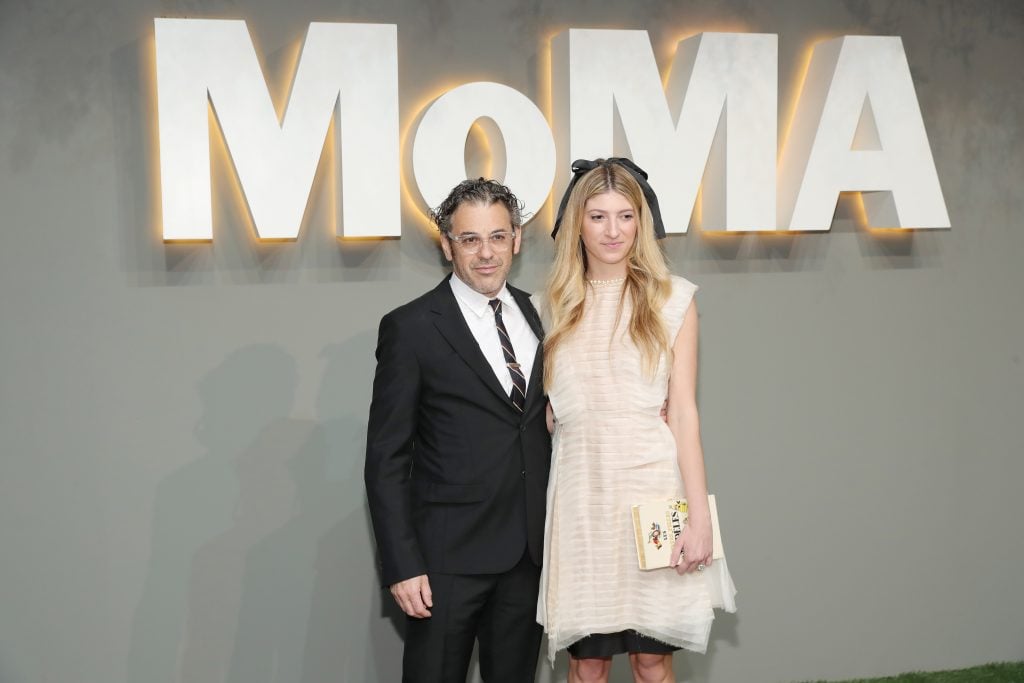
Former employees claim the couple's outspoken progressive values masked the darker realities of working for them.

Sarah Cascone

New allegations are emerging against artist and Nike collaborator Tom Sachs, who has been accused of running a toxic workplace where some former studio employees say they were demeaned, dehumanized, and subject to violent outbursts and unwelcome sexually-charged comments.
Curbed, which first reported the allegations, noted that many employees described the studio as a “cult”—including Sachs himself, who once stressed to Vogue: “I mean that in the Manson Family kind of way, in that we are totally committed to this way of life.” Sachs’s studio also denied “almost all of the allegations leveled at him in the story.”
Now, five former Sachs employees who spoke to Artnet News on the condition of anonymity because they signed NDAs, have reported new details about the job’s allegedly unsafe conditions and unlivable wages, and demands to perform duties they never signed up for—both from Sachs and his wife, socialite and former Gagosian director Sarah Hoover. (The sources are referred to in this article under pseudonyms.)
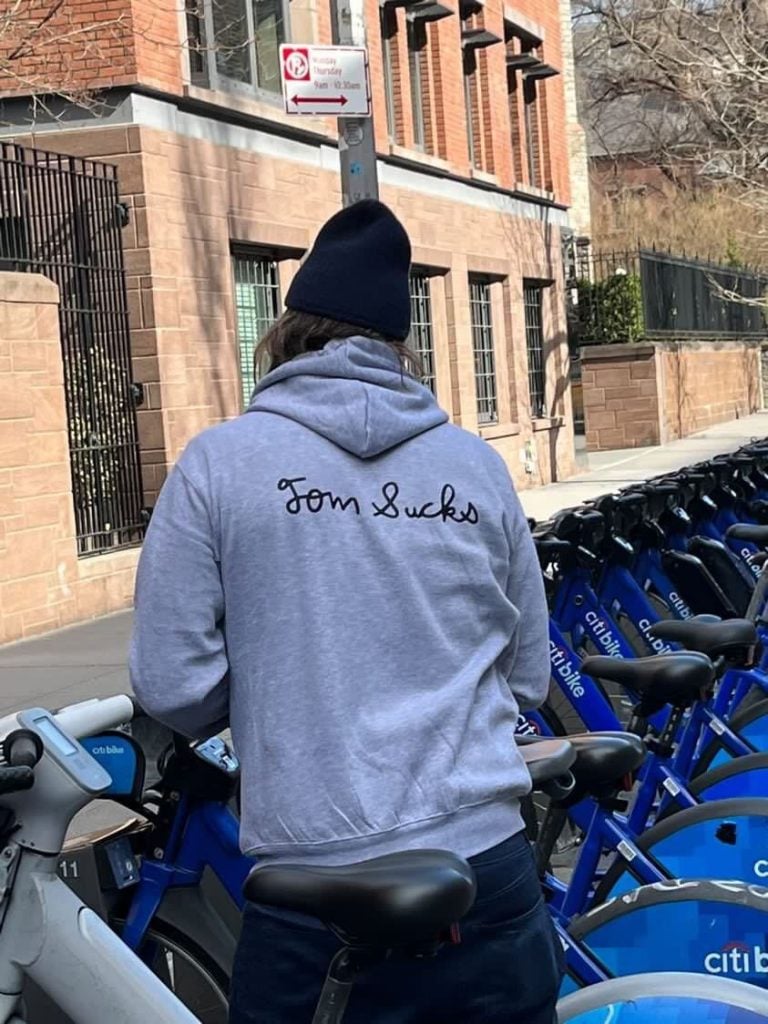
Backlash against Tom Sachs following allegations of workplace abuse has begun. Photo by Artnet News.
Backlash against Sachs from those in the art and sneaker worlds has been swift, but so far Nike, which has partnered with the artist for 11 years, has not announced any consequences for the artist. “We are deeply concerned by the very serious allegations,” the brand said in a statement. “We are in contact with Tom and his studio, seeking to better understand the situation and how these issues are being addressed.”
“Tom has never harassed anyone. He has never tried to make anyone feel uncomfortable. As social and societal standards have evolved over three decades, so have Tom and the studio,” a spokesperson told Artnet News in an email. The studio has “high standards and a fast-paced work environment to support a robust output. Not everyone is a fit for this culture.”
Some past workers at Sachs’s studio say they were required to perform menial tasks not mentioned in their job descriptions and to stay working late into the night—often for minimum wage pay.
For years, minimum wage was standard for some employees of Sachs’s studio. When New York raised the minimum from $12 to $15 per hour in 2019, Sachs reportedly told employees to consider their new legally mandated pay increase a promotion.
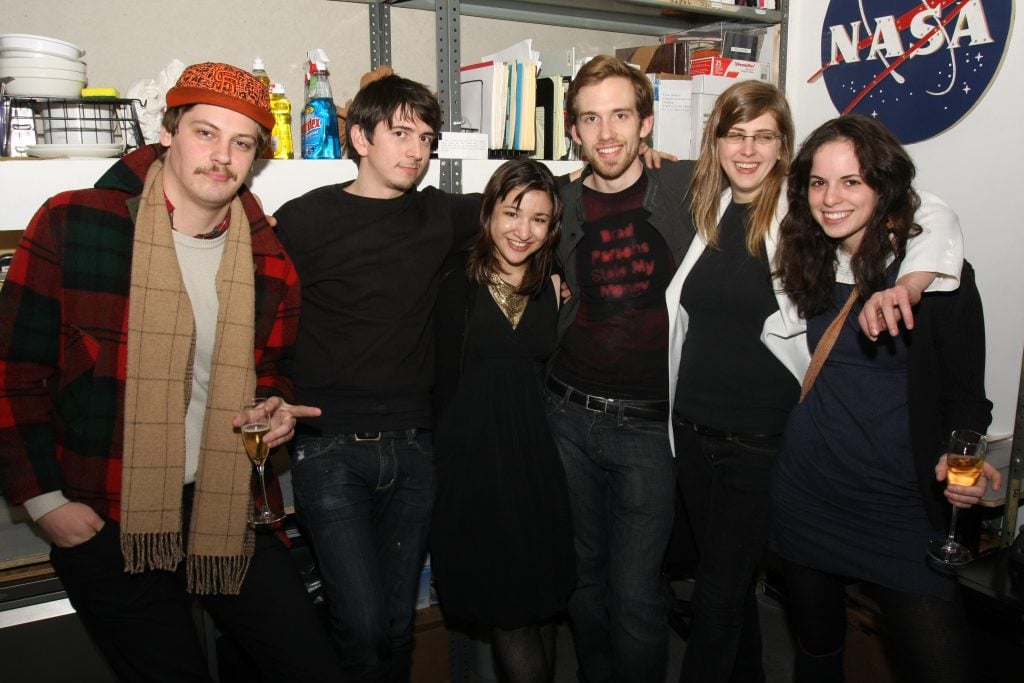
Tom Sachs’s staff at a Visionaire and Krug party at the studio in 2008. Photo by Will Ragozzino, ©Patrick McMullan.
A Sachs spokesperson denied that claim. They confirmed that some employees did receive minimum wage, but said that today hourly workers “typically” earn between $10 and $25 over the minimum wage.
Some former workers claimed that a more meaningful promotion occurred when they stopped being asked to perform duties that apparently had nothing to do with making art—like running errands for Hoover.
“The people who did the more low-level assistant jobs were constantly asked to do stuff for Sarah. They were technically supposed to be studio employees, but to work their way up the ladder they had to do all these Sarah Hoover tasks,” former employee Kristy said.
“None of us signed up to work for the Sarah Hoover studio, but none of us felt that we could say no, because she was the boss’s wife,” studio alum Dawn told Artnet News.
“The distinction between supporting Tom’s personal life and his studio work has not been as clearly delineated as it should have been,” the Sachs spokesperson said. “Tom is making changes to ensure that studio employees only perform tasks related to studio projects.”
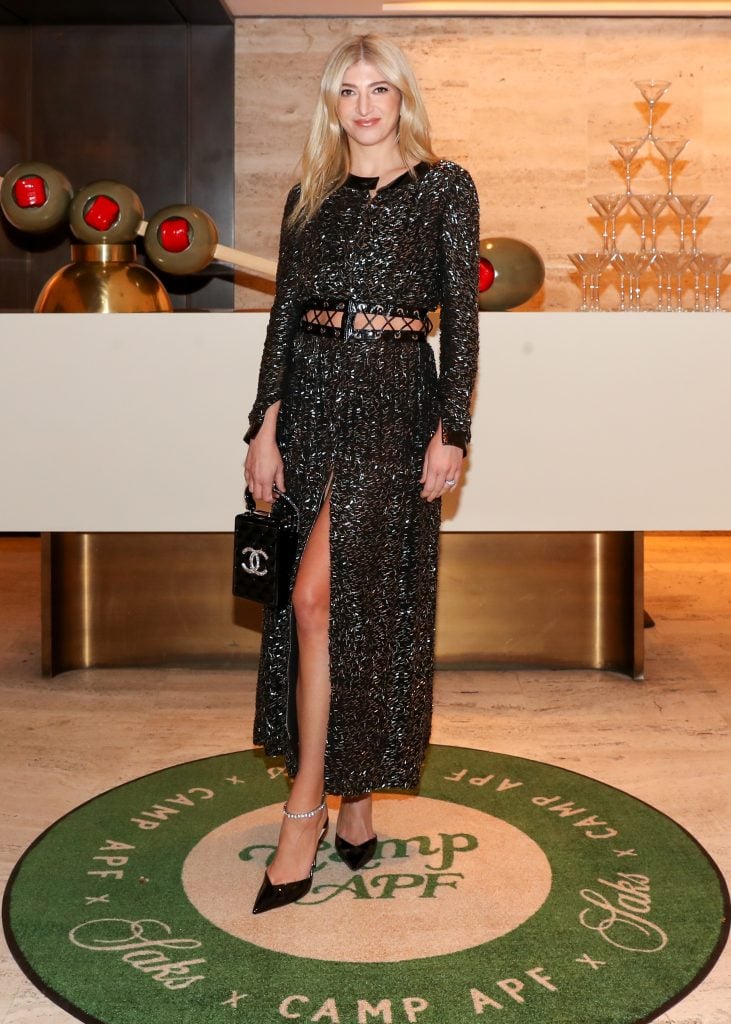
Sarah Hoover at the Art Production Fund’s 2023 Gala. Photo by BFA.
The allegations against Sachs first emerged after he and Hoover posted a widely mocked job ad—first brought to light on the blog Filthy Dreams—where the self-described “high-profile art world family” sought an assistant to perform an absurd range of responsibilities.
The candidate would provide child care for their son, write their social-media posts, book their travel, pick up clothes from “high-end” stores, manage “dog systems,” organize “closet systems,” tend their rooftop plants, and provide IT support, among dozens of other tasks intended to “make life better for the couple in every way.” And if that didn’t make it clear enough that the desired worker should expect no boundaries or limits for what could be required of them—they would also need to be available nights and weekends.
“I’d have to pick up clothes for Sarah Hoover from Chanel. I’d be holding this bag full of $20,000 of clothes, and it would be like ‘this bag is worth more than me,’” said Stacey, who was paid $12 an hour to start. (Artnet News reviewed the employee’s timesheets to verify the wage.) She noted that, even with significant overtime, she only took home about $26,000 after taxes in her first year.
The employees’ low pay contrasted sharply with Sachs and Hoover’s lifestyle, and their professed progressive politics.
Stacey recalled preparing meals for Napoleon, Hoover’s late French bulldog, of “all natural wild rabbit, Whole Foods spinach, aloe water, coconut oil,” she said. “Sometimes I had to sit on the floor and spoon feed him.”
“And then I would be wolfing down pizza in the bathroom that was left over from meetings because I didn’t have enough money for food,” she claimed.
A spokesperson for the studio confirmed that assistants were responsible for preparing “veterinarian-prescribed meals” for the dog.
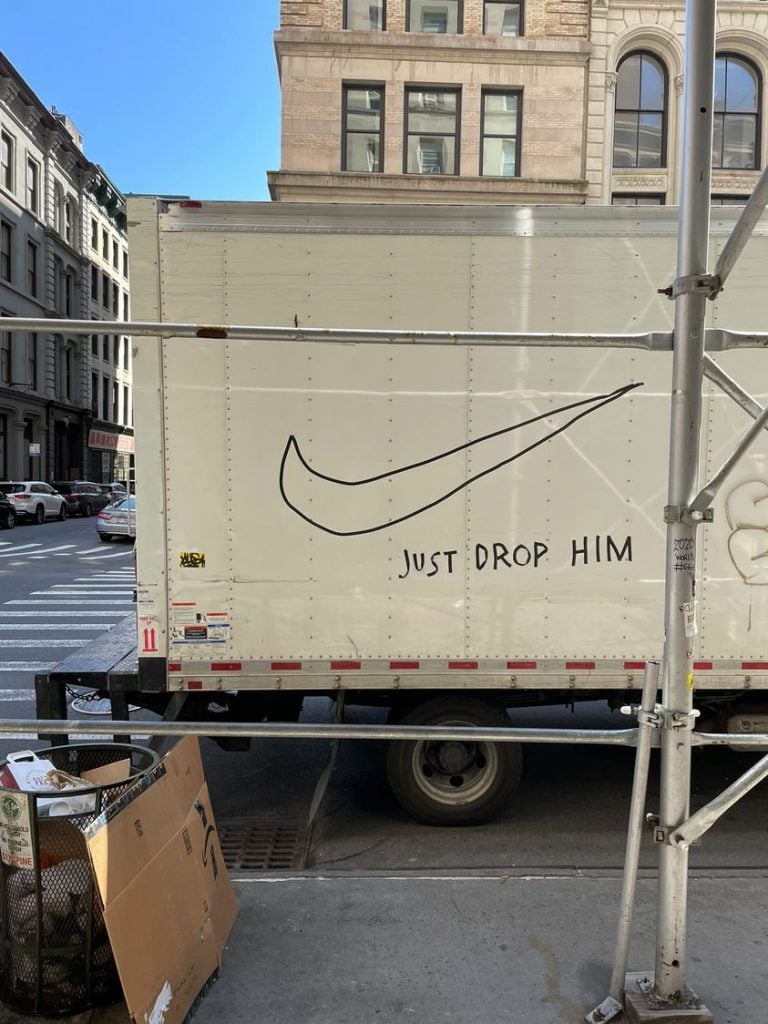
Artist Corey Escoto affixed this call for Nike to drop Tom Sachs on a truck on Broadway in Tribeca. Photo by wetlegz.
Hoover’s Instagram, which has 41,000 followers, is largely dedicated to pictures of herself wearing expensive designer outfits and attending glamorous parties.
In the wake of the Curbed article and the ridicule over their job ad, Hoover has not addressed the outcry over her or Sachs’s employment practices. Nevertheless, she was out and about on the New York gala circuit this past week, attending benefits for Planned Parenthood and the Art Production Fund, at which she is a board member.
Hoover has sold a book to Simon and Schuster titled Motherload, about the challenges of her pregnancy and experience of motherhood (which is currently being adapted into a television series).
In a recent Harper’s Bazaar profile, Hoover said that while society appears to revere motherhood, in reality “it’s the opposite of being on a pedestal because there’s no government support for mothers. It’s almost impossible. It’s prohibitively difficult to be a working mother.”
Hoover has also condemned the ethics of the art world for pretending to have progressive values while in reality reinforcing patriarchal structures and wealth inequality.
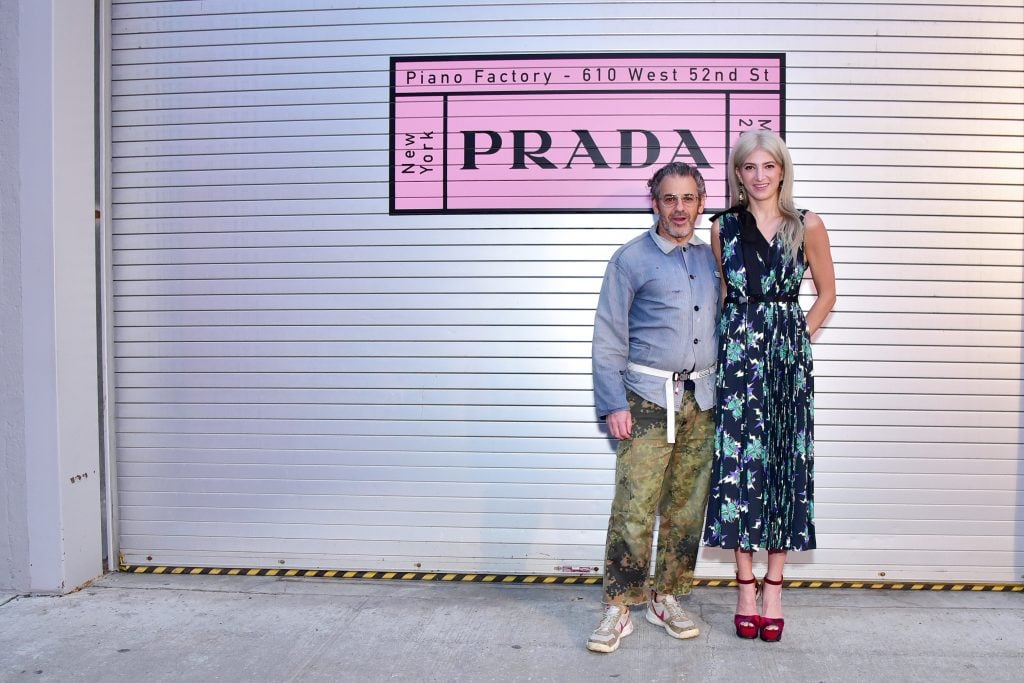
Tom Sachs and Sarah Hoover attend the Prada Resort 2020 fashion show at Prada’s New York headquarters in 2019. Photo by Sean Zanni/Getty Images for Prada.
“I think that the art world has incredible potential to be an equitable and beautiful place where people can make money and get paid to be artists and find community and not suffer from some of these more negative aspects,” Hoover said on the model Emily Ratajkowski’s podcast in December. “The way to achieve that is transparency, honesty, and telling stories about what you’ve been through there.” (If you haven’t signed an NDA, that is.)
Simon & Schuster did not respond to inquiries seeking details on Hoover’s book, but according to one of her Instagram stories it includes a chapter about “the racism of the caregiving model we have in the U.S. where most domestic workers/nannies are BIPOC and immigrant women—and the history of this which is embedded in slave culture,” she wrote.
Some former employees and commenters online have criticized Hoover—who has nannies, a housekeeper, a private chef, and perhaps that all-purpose assistant—for publicly denouncing the hardships facing working mothers, especially low-income mothers, while at the same time hiring for a low-wage, high-demand, around-the-clock job (with caregiving responsibilities) that few mothers in New York could reasonably afford to take.
The full-time assistant position’s starting salary of $65,000 is more than Stacey’s $12 per hour wage, but it still falls far below the $90,000 minimum living wage of a parent with one child in New York City—and that’s to say nothing of the 24/7 availability that Hoover and Sachs required in the ad.
“Everything Sarah says is about how much of a hardship motherhood is, and it’s put on such a pedestal, and how difficult it is to be one—and yet she’s literally trying to hire a second mom and then pay them $65,000 a year,” former studio worker Claudia said.
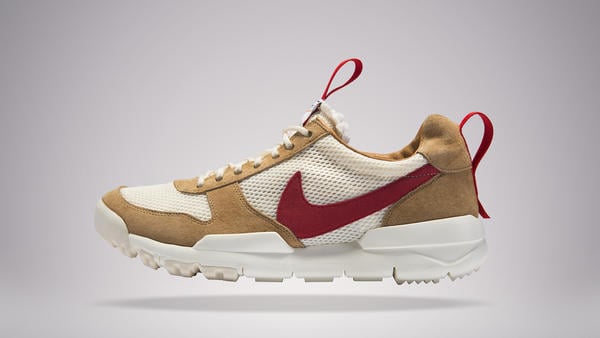
Tom Sachs, NIKECraft Mars 2.0. Courtesy of Nike.
Curbed reported on allegations of unprofessional conduct that may have crossed the line into sexual harassment—including an account of Sachs taking a Zoom meeting with Nike executives wearing only his underwear.
Former employee Dawn said: “Someone kind of jokingly was like ‘hey dude, put a shirt on, put some pants on,’ but he didn’t. Tom took the entire meeting just in his underwear in his beach house.”
A spokesperson for the studio denied this: “Tom has never shown up for a meeting in his underwear.” They noted, however, that “Tom has virtual fitting meetings with partners, which he participates in almost weekly, and those meetings do require trying on clothes and changing garments. This is a normal part of the design process.”
Nike may have had misgivings about problematic behavior by Sachs before the most recent claims came to light. Complex just reported that Nike erased the phrase “work like a slave, order like a king, create like a god” from the boxes of Sachs’s NikeCraft Mars Yard 2.0 shoes just before they were shipped to stores.
One former Nike staffer who previously worked with Sachs declined to comment on the allegations, but confirmed that they asked the company to be transferred to a different project due to what they saw as Sachs’s inappropriate and sexist behavior.
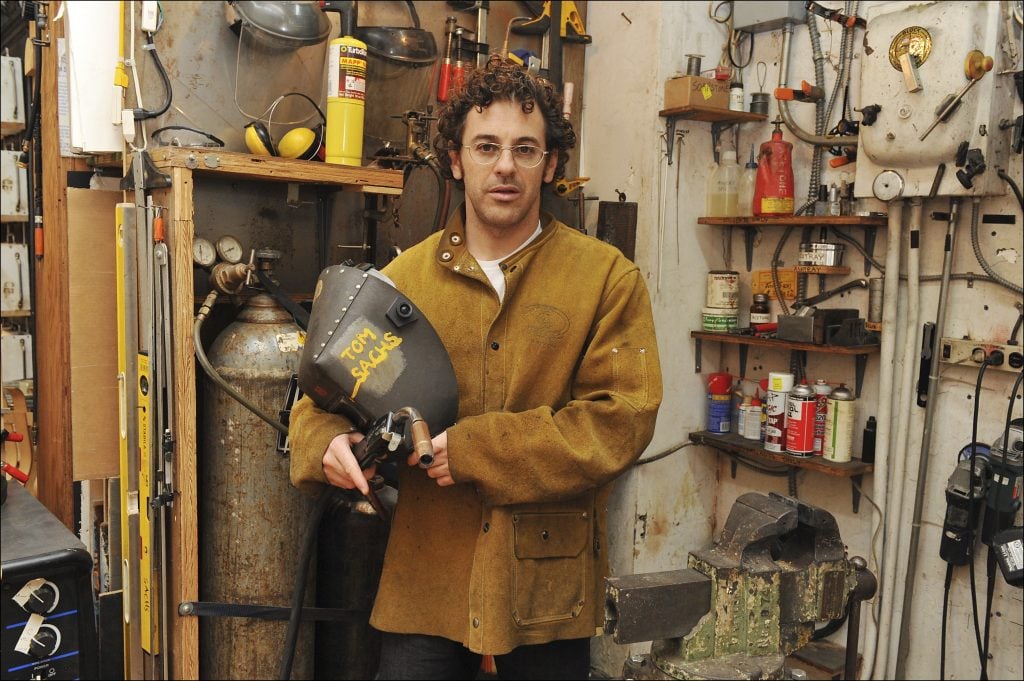
Artist Tom Sachs in a recreation of his Soho workshop in Paris, France in 2008. Photo by Alain Benainous/Gamma-Rapho via Getty Images.
On Twitter, scores of sneaker fans are calling out Nike for not severing ties with Sachs the way it did with Black NBA star Kyrie Irving, who posted links to an antisemitic film on social media.
“I’m gonna need the same kind of energy against the acclaimed ‘genius’ Tom Sachs we saw with Kyrie Irving and Ye’s transgressions,” writer and social-media strategist Charles Etoroma wrote on Twitter. “The things Tom has done over the years are atrocious, disgusting, and repulsive. All equal, if not worse, than things from the Black individuals above.”
Sachs, who is Jewish, previously displayed a swastika sticker in the studio. The 2010 autobiographical HBO series The Neistat Brothers features a book that Sachs signed for frequent collaborator Van Neistat with the note “Arbeit Macht Frei,” the slogan meaning “Work sets you free” that welcomed Jewish prisoners to the Auschwitz concentration camp.
“Tom Sachs is proudly Jewish,” a spokesperson for the artist said. “Tom’s work and art has very publicly grappled with ways to subvert and reclaim this painful part of Jewish history.”
Some of the working conditions described by Sachs’s former employees seem to be hinted at in Sachs’s own artworks, such as the video 10 Bullets, which includes multiple shots of studio employees emptying a litter box.
The 2010 film—which notes in its description that it is “required viewing for all employees and studio visitors,” including journalists who wish to interview Sachs—features scenes from the 1987 war drama Full Metal Jacket, in which a drill instructor brutally humiliates a private, who is ultimately driven to suicide.
“Follow this guide carefully, and you probably won’t be fired,” the narrator proclaimed, intoning the importance of “the studio’s precise standards, aka ‘the code.’”
Meanwhile, in Sachs’s 40-minute film A Hero’s Journey, a new studio employee is referred to only as “Street Scum.”
“She will develop a feeling that perhaps she just isn’t good enough,” the narrator said. “Indeterminate, mindless labor. No pay. Silence.”
Over the years, Sachs has carefully crafted a public image as the demanding taskmaster, requiring slavish devotion to his strict rules.
“I think there is an element of it where he thinks those kinds of things are what makes him a genius or unique. I think he has no real grasp on reality or what’s okay and what’s not,” was Dawn’s view.
“What a great cover to say the abuse is part of the art,” Kristy added. “Tom would use this line that it’s impossible for it to be any other way—but as someone who has worked for other artists, I know that isn’t true. It’s possible to be an artist and to treat your employees with respect.”
A museum professional claimed on Facebook she once organized a museum patron visit to his studio, and that Sachs sent her a long list of items she needed to bring, including two bottles of tequila and what she termed as an “outrageous” amount of kosher pigs in blankets and specific, hard-to-find mini beers.
She said she carried the items to his studio on the subway. “I imagine he thought it amusing institutional critique of some sort, but really it was abusing one person,” she said. “I will never forget that total lack of self awareness.”
When asked about the account, Sachs’s spokesperson said: “Over a decade ago MoMA did provide catering at an event for MoMA patrons hosted at Tom’s studio.”
Curbed also reported that Sachs was known for throwing objects—sometimes at employees—at the studio. (His 2019 video PARADOX BULLETS depicts a cartoonish version of the artist hurling a typewriter through a wall, where it hits a studio worker on the other side.)
But former employees report that this behavior was also reflected in real life. “Tom used to throw things off the desk across the room at people,” Dawn said. “If he started to write with a pen and it didn’t work, he would literally throw the pen down, swipe everything off the desk, and storm out of the room cursing.”
Claudia recalled an incident in which she and Sachs were working together and then “he threw two heavy objects into a glass door right in front of us and started screaming at me to get out of his face. It was completely unwarranted,” she said. “A 55-year-old man should not have a tantrum. I went home right on time that day just to cry and be able to breathe.”
Sachs, through his spokesperson, denied these claims. “Tom has never thrown anything at studio employees, but he is not immune to workplace frustrations and has acknowledged that at times he has acted in ways that don’t reflect his studio values. He has apologized to those present when it did happen.”
The studio, which did not previously have an HR department, said it is working to hire an external HR consultant.
Some employees claimed that they were asked to work with toxic materials in unventilated areas, or to complete dangerous tasks.
Sachs’s series of “Mars Rocks” sculptures, for instance, contain lead pellets mixed with resin. “The lead gets sanded smooth on one side,” Kristy said, noting that she believes it was possible to breathe in the particles.
The resin—which Sachs uses in numerous works—was also said to be risky, due to the carcinogenic nature of the material.
“The person who was using it would be told to wear a respirator, but that doesn’t stop anyone else in the room also being exposed to those fumes,” Kristy added. “There could be six people down in the basement working at once, and there’s no ventilation.”
“People were being asked to do unsafe things, and did them because they wanted to please Tom,” Kristy said, noting that that included operating dangerous equipment like table saws late into the night while working overtime.
Once again, Sachs flatly denied the claims that he ran an unsafe work environment. “The health and safety of the studio team is of the utmost importance to Tom and the studio leadership team. Tom is fanatical about it,” the spokesperson said. “The studio has a proper ventilation filtration system that exceeds the space’s ventilation requirements as specified by New York State Health and Safety regulations. The studio also uses spot exhaust for targeted areas, and provides personal 3M respirators for each fabricator.”
Sachs did not offer health insurance for employees until the COVID pandemic.
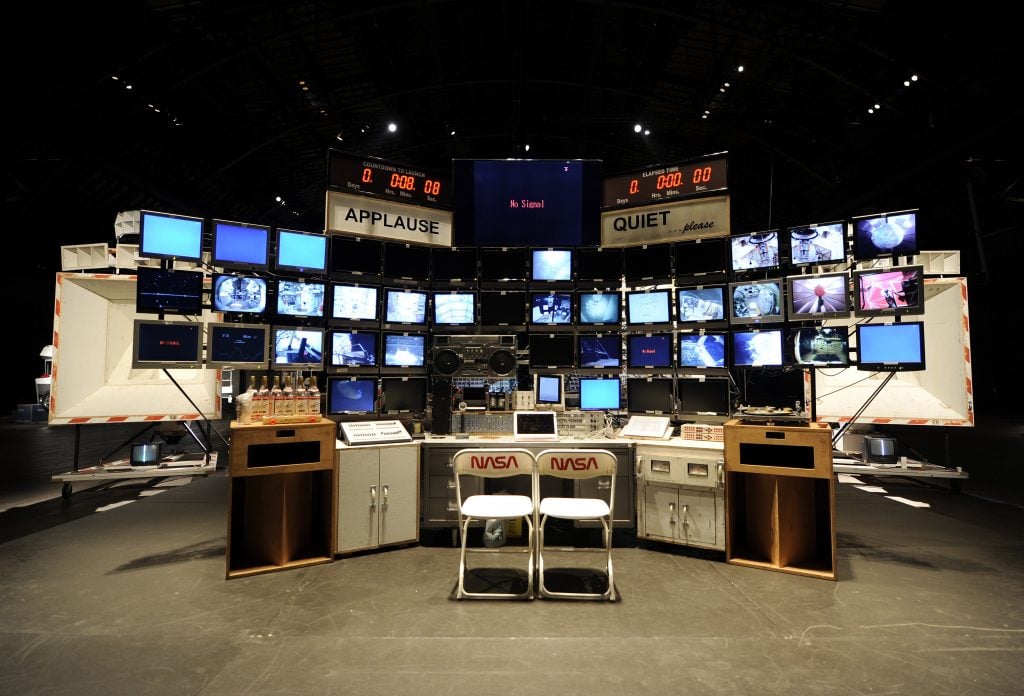
Installation view of “Tom Sachs: Space Program” at the Park Avenue Armory in 2012. Photo by Timothy A. Clary/AFP/GettyImages.
But some say the plan that he currently offers was prohibitively expensive. “It was in the $400 range per month, which probably would have been about half my paycheck, before overtime,” Stacey said. “I didn’t ever accept it because it was so far outside my possible budget.” (Sachs did not respond to this claim.)
(Former employees also claim they were not given legally mandated sick days before 2020; a Sachs spokesperson said “the studio complies with New York State regulations and laws regarding sick and safe leave.”)
In 10 Bullets, a brief shot shows a foldout poster of a fully nude woman identified as Ukrainian porn star Sasha Vinni is prominently displayed next to a utility sink. To some, it might look quirky, in a Wes Anderson kind of way.
But being forced to view nude or pornographic imagery on the job could create a hostile work environment under generally applicable employment laws. At the Sachs studio, it was allegedly in plain sight for some employees.
“There’s loads of pornography on the main studio server—a really extensive archive of photos. It’s accessible to anyone on any of the computers, which is weird,” Dawn said.
Sachs’s spokesperson said there is not currently a studio server, but did not respond when asked if there had been one in the recent past.
“Any media depicting nudity or sexual acts in the studio is strictly for artworks. Tom’s exploration of these topics is well-noted in the media and in his portfolio,” the spokesperson said.
“Tom frequently made assistants go through personal photos on his phone and computer, and there was some really questionable content—nude photos of himself and his wife. It always felt like I was seeing something that I wasn’t supposed to see,” Dawn said.
The artist did not deny that employees may have been exposed to nude photos of himself and Hoover, but the spokesperson said “it would not be Tom’s intent to make a studio employee uncomfortable in this way.”
Some alleged to Artnet News and Curbed that Sachs was prone to making unprofessional remarks about women’s appearances.
“He’s very open about his sexual preferences in a woman—things that no one you work with should know about,” former employee Mary Anne said.
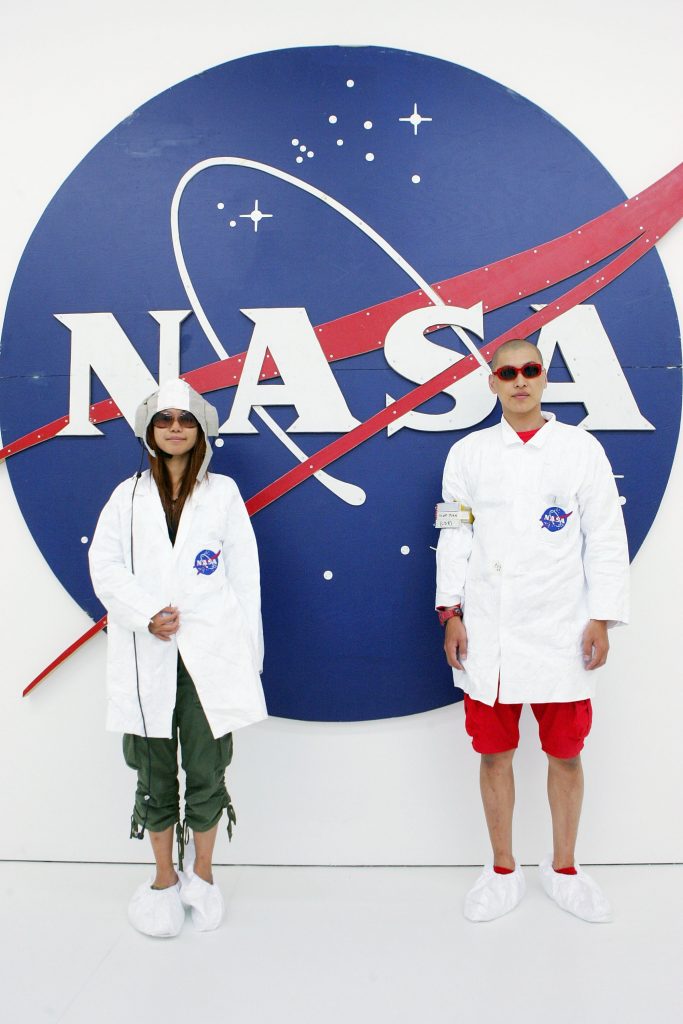
Staff at the opening of Tom Sachs’s “Space Program” exhibition at Gagosian, Los Angeles, in 2007. Photo by Noel Vasquez/Getty Images.
That included comments about the studio staff, some former employees said. “Tom wants the studio team to look nice. Only he would say not-great words, like ‘hot’ and ‘sexy,’ or whether or not he would feel inspired to cheat on his wife with somebody he was working with,” Stacey said. “He wanted everyone to be really beautiful, but not too much. That would be too threatening to Sarah.”
Through a spokesperson, Sachs denied making these comments.
Sachs told Curbed that many of the incidents employees described, including the employee he called a “shiksa goddess” and whom he told his young son was “daddy’s type,” were jokes.
“I think that’s actually how Tom has toed the line for so long—people assume that he’s joking when he says a lot of crazy stuff,” Dawn believes. “You watch his interviews, and the audience will literally laugh when he says things that he’s fully serious about.”
Curbed noted that Sachs had nicknamed part of the studio basement “the rape room.” He did not deny the name, but said it “was a tasteless comment” that referred to the high crime levels in Soho when he first acquired the space in 1990.
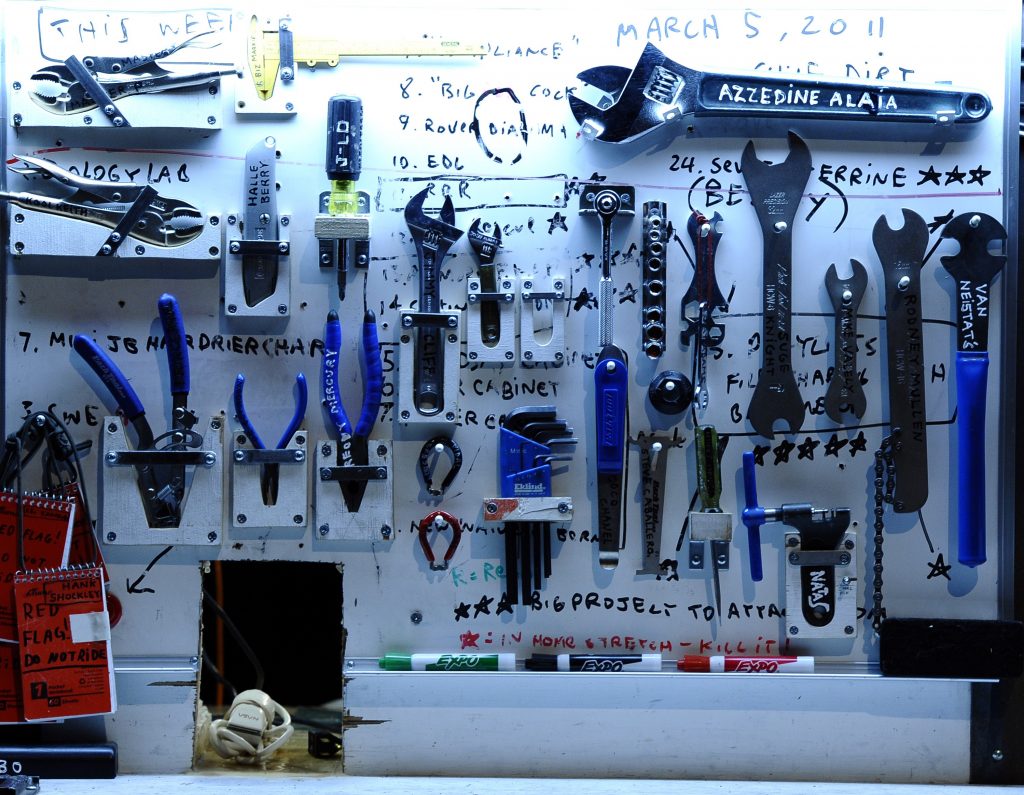
Installation view of “Tom Sachs: Space Program” at the Park Avenue Armory in 2012. Photo by Timothy A. Clary/AFP/GettyImages.
“Leadership at the studio did away with this naming convention nearly a decade ago, as it never reflected the values and integrity of the studio,” the spokesperson said. “Tom is ashamed to have it associated with his studio.”
Kristy, who worked there much more recently than that, said the nickname was still in use. (Sach’s representatives did not respond to this claim.)
“The term was awful, and we hated using it,” she said. But, “if you’re in the fabrication world, working for Tom, you feel like you’ve really made it.”
In hindsight, some employees see things much differently.
“I just can’t believe I wasted years of my life. I still have nightmares about it,” Mary Anne said. “I really, really wanted this job, and I was so happy that I got it—but I don’t think I will work in the arts again.”